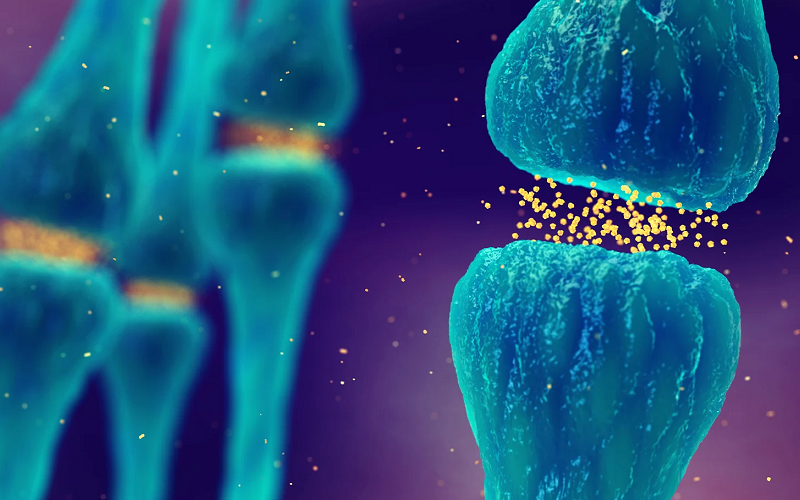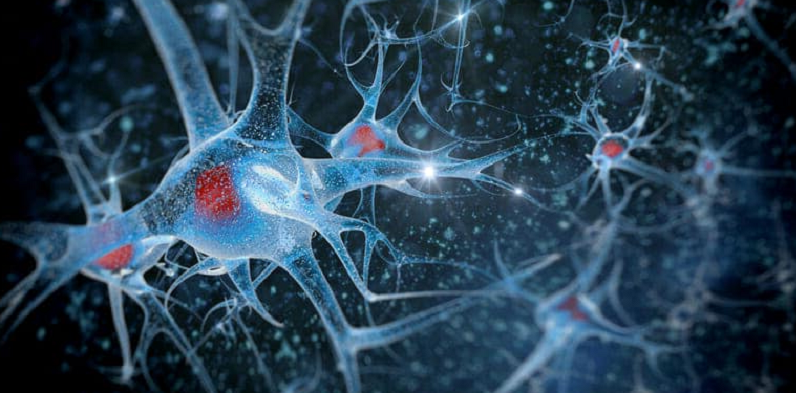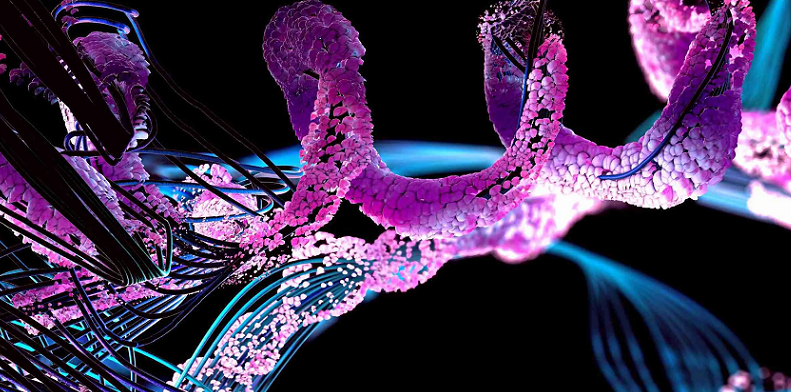
In the complex universe of our brain, a symphony of hormones plays a pivotal role in governing our cognitive health and well-being. Among these, Neurokinin B stands out as a molecule of enigma and intrigue. This peptide, lesser-known yet critically important, has a unique place in the hormonal milieu of our brain. Neurokinin B has a multifaceted role in brain function potential implications in various neurological and mental health conditions.
Contents
Understanding Hormones in the Brain
Our brain, often likened to a sophisticated computer, orchestrates a myriad of functions essential for our survival and well-being. Central to this orchestration are hormones, biochemical messengers that regulate numerous aspects of brain function and overall health.
Role of Hormones in Brain Function
Before delving into the specifics of Neurokinin B, it’s crucial to understand the broader context of hormonal influence in the brain. Hormones, produced by glands throughout the body, travel through the bloodstream to reach the brain, where they bind to specific receptors. This interaction triggers a cascade of responses, affecting everything from mood and memory to stress response and sleep cycles. Hormones like cortisol, for instance, play a key role in our stress response, while others like serotonin and dopamine are central to mood regulation and feelings of pleasure.
Overview of Neurokinin B Among Other Brain Hormones
Among these well-known hormones lies Neurokinin B, a neuropeptide that, despite its lower profile, is integral to brain function. Unlike hormones with direct influences on mood or stress, Neurokinin B operates more subtly, often modulating other hormonal pathways or playing roles in specific brain regions. Its effects, while not as immediately apparent as those of cortisol or serotonin, are no less crucial to our cognitive health and the smooth functioning of our neural networks [1].
The Unique Nature of Neurokinin B
What sets Neurokinin B apart from other brain hormones is its specialized roles and mechanisms of action. Unlike more ubiquitous hormones, Neurokinin B’s functions are highly specific and localized. It’s involved in regulating body temperature, reproductive functions, and is even implicated in the onset of puberty. Its presence in certain brain areas, like the hypothalamus, underlines its importance in maintaining the delicate balance of our body’s homeostasis. Understanding this unique hormone is not just about adding another piece to the puzzle of brain function—it’s about appreciating the nuanced and intricate nature of how our brains operate.

The Discovery and Evolution of Neurokinin B Knowledge
The journey of understanding Neurokinin B is as fascinating as the peptide itself. Tracing its discovery and the evolution of our knowledge about it not only sheds light on this specific hormone but also reflects the broader advances in neuroscientific research.
Historical Perspective of Neurokinin B
The story of Neurokinin B begins in the early 1980s. Initially identified in porcine spinal cord, this neuropeptide was first isolated and characterized by a group of scientists interested in substances P and K, two related neuropeptides. Early studies focused on its structure and the identification of its receptor, NK3, paving the way for further research into its biological activities [2].
Key Studies and Milestones Involving Neurokinin B
As research progressed, the 1990s and 2000s saw significant milestones in understanding Neurokinin B. Studies began to uncover its role in the central nervous system, particularly its involvement in regulating body temperature and reproductive functions. One landmark study in the early 2000s revolutionized our understanding by linking Neurokinin B to the control of puberty onset, demonstrating its critical role in human development. These findings opened new avenues for research, suggesting potential implications in various health conditions.
Current Understanding of Neurokinin B
Today, our understanding of Neurokinin B is vastly more nuanced. Advanced imaging and molecular biology techniques have revealed its widespread presence in the brain and its intricate interactions with other hormones and neurotransmitters. We now recognize its role in modulating mood, stress responses, and even pain perception. Furthermore, ongoing research is exploring its potential in treating conditions like neuroendocrine tumors, showcasing its therapeutic promise.
Neurokinin B and Brain Health
As we go deeper into the realm of Neurokinin B, its significance in brain health becomes increasingly evident. This neuropeptide, though less prominent in the public consciousness than hormones like serotonin or dopamine, plays a crucial role in the intricate dance of brain chemistry.
Physiological Functions of Neurokinin B
Neurokinin B’s primary functions in the brain are diverse and essential. It is intricately involved in regulating body temperature and is a key player in the reproductive system, influencing aspects of sexual maturation and function. Beyond these roles, Neurokinin B interacts with various neural pathways, influencing our response to stress and playing a part in the complex network that governs mood and emotional responses. Its exact mechanisms are still a subject of research, but it’s clear that Neurokinin B is a significant contributor to maintaining brain health and homeostasis [3].
Impact of Neurokinin B on Cognitive Processes
The impact of Neurokinin B on cognitive processes is a fascinating area of study. While not directly linked to cognitive functions like memory or learning, its influence on mood and stress can indirectly affect these processes. For instance, an imbalance in Neurokinin B levels might contribute to mood disorders, which in turn can impair cognitive functions such as concentration, decision-making, and memory retention. Understanding the role of Neurokinin B in these indirect pathways opens potential avenues for therapeutic interventions in cognitive health.
Relationship of Neurokinin B with Other Hormones and Neurotransmitters
Neurokinin B does not operate in isolation; its effects are often mediated through its interactions with other hormones and neurotransmitters. It works in concert with substances like estrogen and testosterone in the reproductive system and has been observed to interact with neurotransmitters like dopamine and serotonin. These interactions highlight the complexity of brain chemistry and the importance of a balanced hormonal environment for optimal brain function [4].

Neurokinin B in Disease and Disorders
The exploration of Neurokinin B extends beyond its physiological roles, venturing into the realms of pathology and therapeutics. Understanding how this neuropeptide functions in various diseases and disorders not only enhances our knowledge of these conditions but also opens potential avenues for novel treatments.
Role of Neurokinin B in Neurological Disorders
Neurokinin B has been implicated in several neurological disorders, particularly those related to its primary functions. For example, its involvement in temperature regulation makes it a point of interest in research on febrile seizures and certain types of hypothalamic dysfunction. Additionally, abnormalities in Neurokinin B levels have been observed in patients with mood disorders, suggesting its potential role in the pathophysiology of these conditions. While the exact mechanisms are still being unraveled, the links between Neurokinin B dysregulation and neurological disorders offer promising areas for future research and therapeutic development [5].
Implications of Neurokinin B in Mental Health Conditions
In the realm of mental health, the role of Neurokinin B is garnering increasing attention. Given its involvement in mood regulation and stress response, researchers are exploring its potential links with depression, anxiety, and stress-related disorders. The hypothesis is that imbalances in Neurokinin B, much like those seen with more well-known neurotransmitters like serotonin, could contribute to the development or exacerbation of these conditions. This line of research not only broadens our understanding of mental health disorders but also suggests new targets for pharmacological intervention.
Current Research on the Therapeutic Potential of Neurokinin B
The potential therapeutic applications of targeting Neurokinin B are a particularly exciting aspect of current research. Scientists are investigating the possibility of using Neurokinin B antagonists or agonists in treating a range of conditions, from reproductive health issues to certain types of cancer. In neuroendocrine tumors, for example, targeting Neurokinin B pathways might offer a novel approach to therapy. While this research is still in its early stages, the possibilities it presents underscore the far-reaching impact of Neurokinin B on health and disease.
References
[1] Neurokinin B and the hypothalamic regulation of reproduction
[2] Neurokinin B-Expressing Neurons of the Central Extended Amygdala Mediate Inhibitory Synaptic Input
[3] Deciphering Direct and Indirect Effects of Neurokinin B and GnRH in the Brain-Pituitary Axis
[4] Kisspeptin/Neurokinin B/Dynorphin (KNDy) cells as integrators of diverse internal and external cues
[5] The Emerging Therapeutic Potential of Kisspeptin and Neurokinin B

